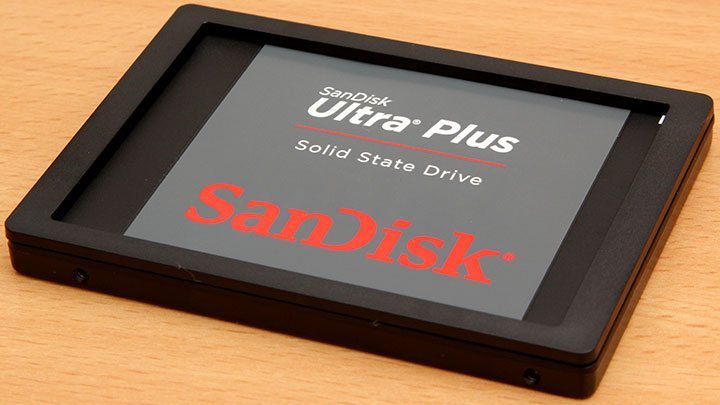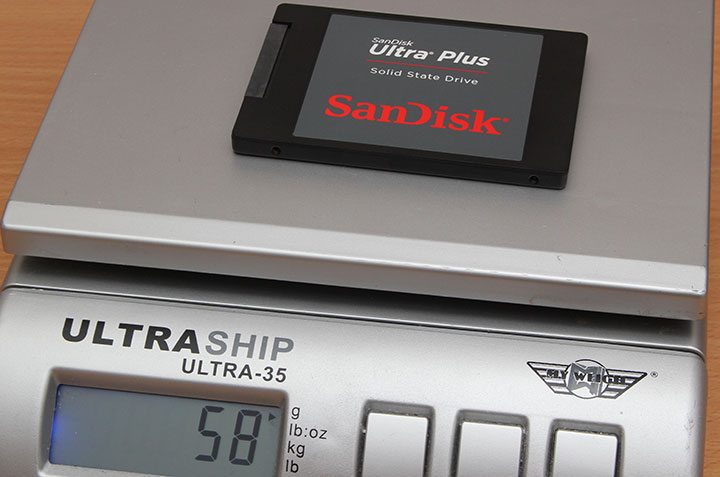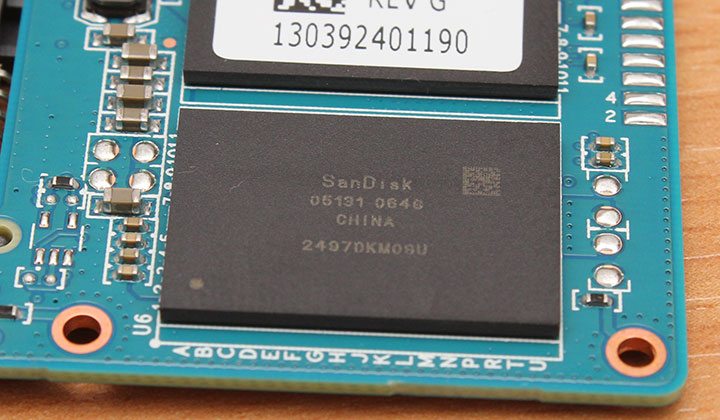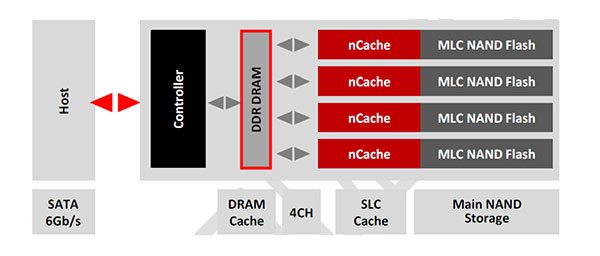SanDisk Ultra Plus 256GB SSD Review
Chris Hadley / 12 years ago
Like a growing number of SSDs and other 2.5″ drives on the market, the Ultra Plus is part of the slim form factor family, measuring a mere 7mm thick making it ideal for the latest generation of ultrabooks. The plastic housing makes the drive remarkably light which for ultra books is also a welcome sight.

For applications where a thicker drive is required, Sandisk include a simple stick on spacer to bulk out the drives proportions.

As mentioned above the drive is very light, so much so that I did honestly think that I had a dummy drive in my hands as it has the same feel to it. Putting the drive on the scales, we can see just how light it is, adding the spacer only adds an additional 4g taking it to 62g overall.

Opening up the drive to see why it’s so light, as a plastic case alone is not enough to make it this light, I get one huge shock. The PCB inside is only a third of the size of a typical SSD. Just to give a reference for scale, I left a 50p coin next to the PCB.
Delving into the more technical side of things, The Ultra Plus is based around one of Marvell’s SS889175 controllers, which in itself is a lightweight version of the 81974 controller – using less power and hosting four totally independent NAND channels, which as will see is a key part of this drives build. Next to the controller is a 128MB volatile cache acting as a data buffer between the flash and the controller.

Where this drives immense capacity per die comes from is through the use of four of SanDisk’s own 19nm eX2 ABL MLC NAND IC’s, each with a whopping 64GB capacity and tow of these are mounted to either side of the PCB.

So what is so special about these 19mn ICs? Each of the chips feature a two layer design, which means that each one in turn has an SLC layer in addition to the MLC, this additional layer SanDisk has called nCache and part of the beauty of this architecture is that the firmware can adjust its size based on the drives requirements, but we can still presume that this will still lie within the ~7% allowance that the firmware normally gets.
Within this nCache the drive stores small file writes, boosting the speed at which they are accessed. Typically caches of this type are used to remove the need for DRAM, but as seen, SanDisk include both options to cover all grounds. How this all relates to performance in the real world is what I intend to find out.




















